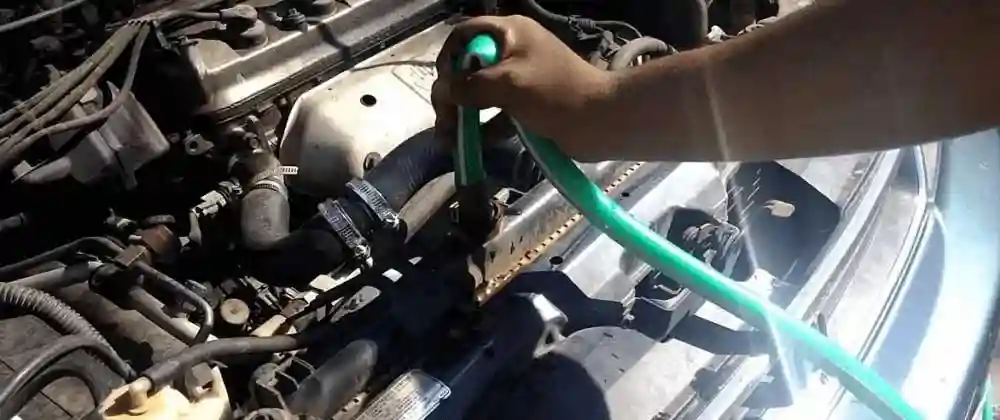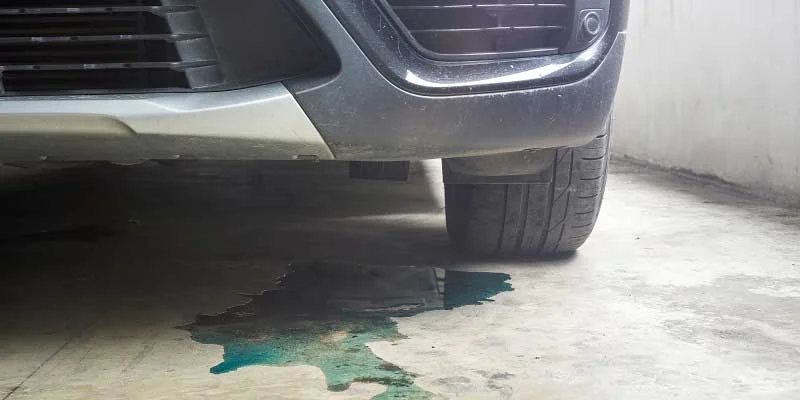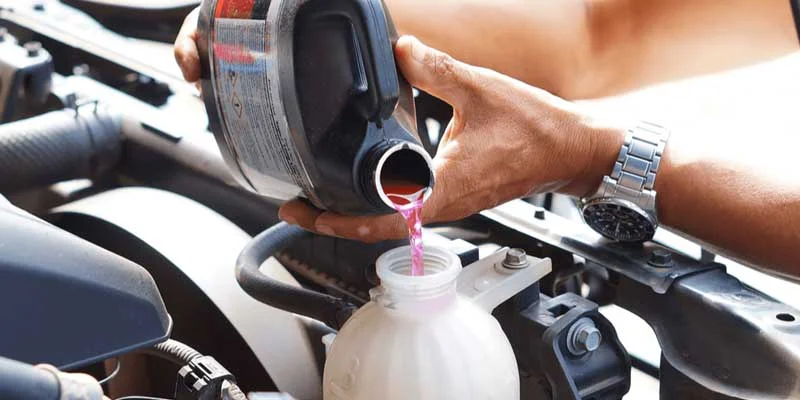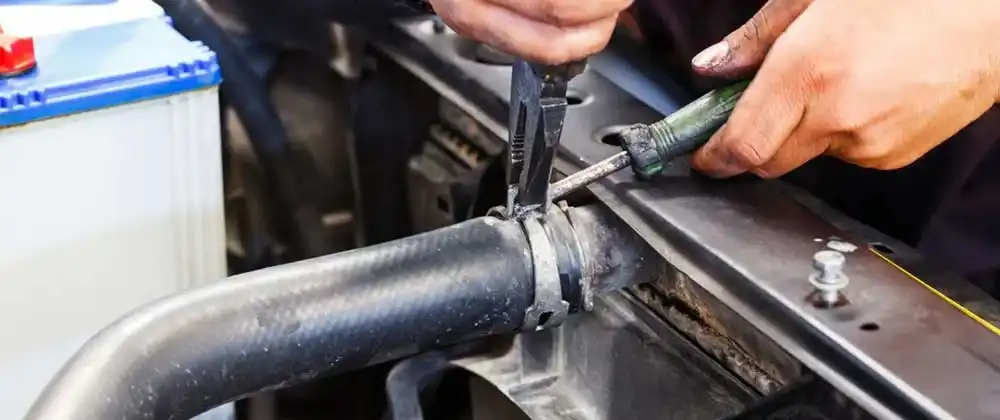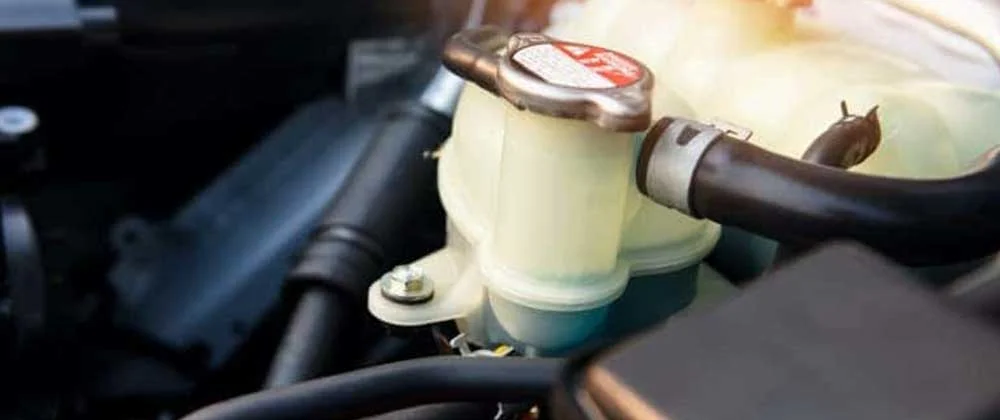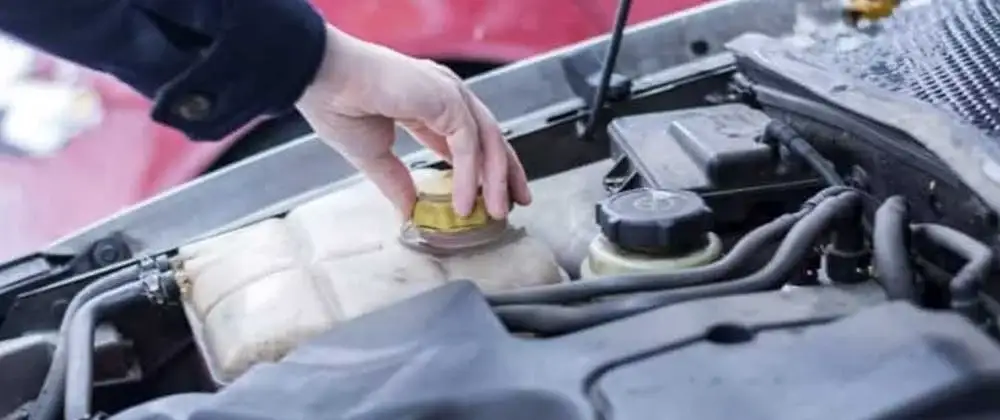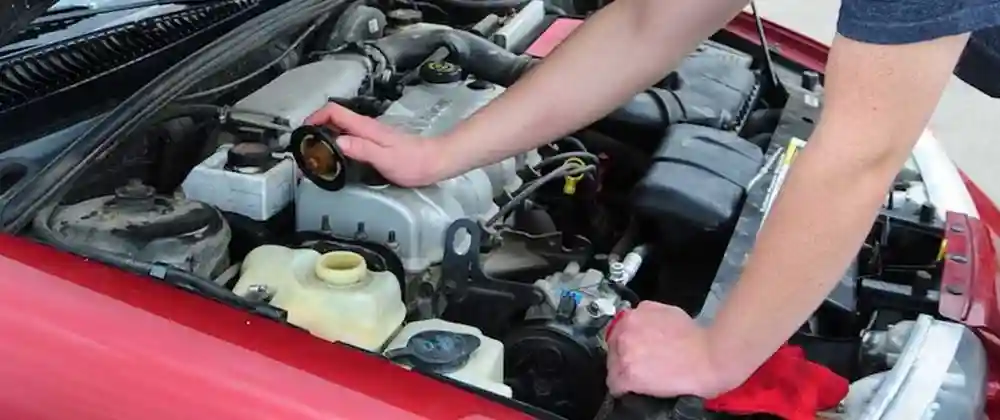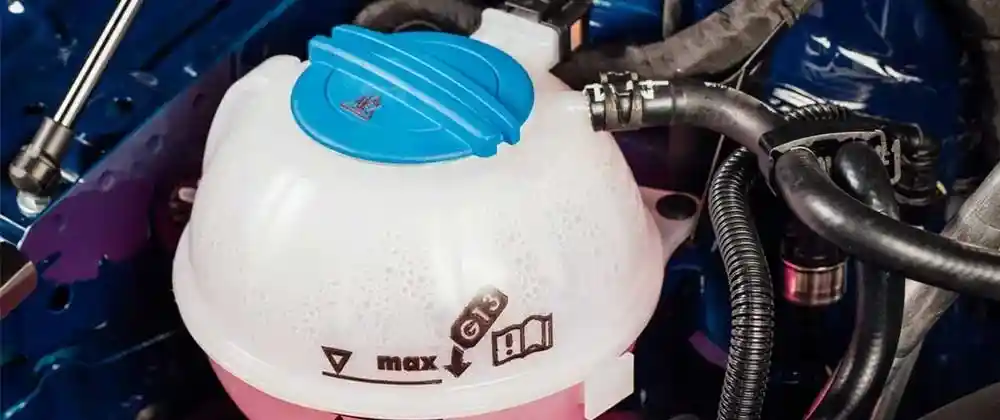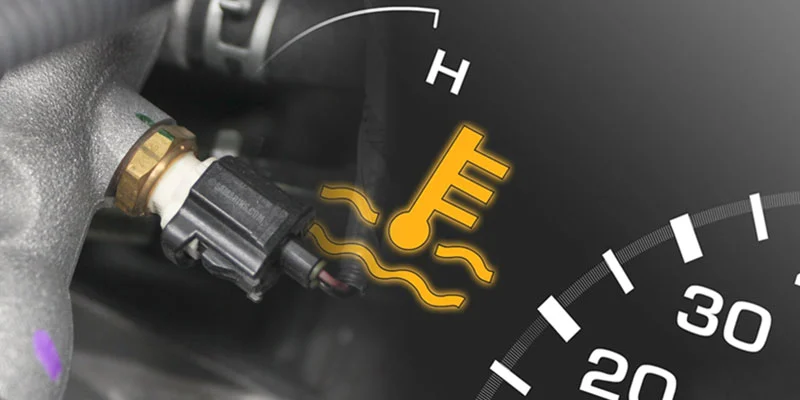Your car has a coolant system, but you don’t know how to flush it. If you want to eliminate clogged pipes or clear out old fluid, you should read this article.
Coolant systems are essential parts of cars that keeps the engine cool, and they protect the engine from overheating by regulating the temperature inside the engine. Regular maintenance can strengthen the life of various parts in your car. Flushing your coolant system is one of the essential maintenance tasks to upkeep the health of your car’s engine.
How?
The radiator or Coolant system is responsible for sending the coolant or antifreeze mix to the various components of the engine to maintain its temperature and prevent overheating.
It would help if you replaced the coolant every 1, 00,000 miles or five years, whichever is earlier.
What is flushing the coolant system?
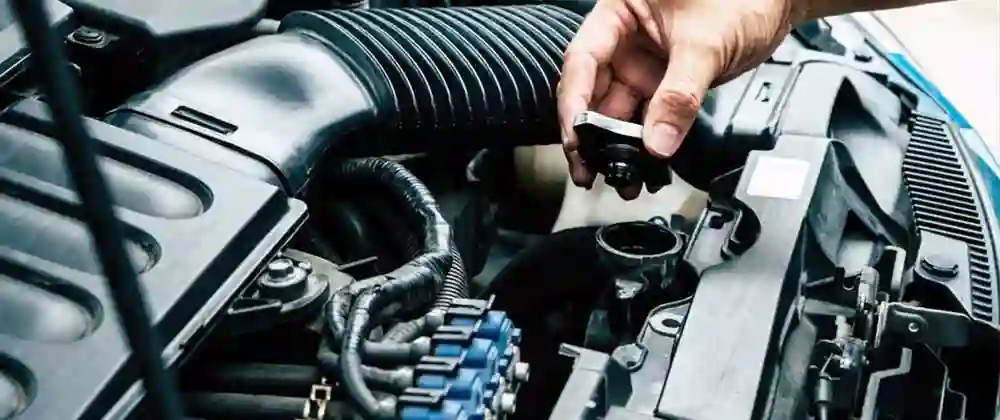
A coolant flush system runs the distilled water through the Radiator to clean it thoroughly before adding antifreeze. It is done to clean all the gunk and rust deposited on the radiator over time. It prevents any blockage in your car’s cooling system and thus prevents overheating.
Should You Consider flushing Your Car’s Cooling System?
In a nutshell, most likely. As time passes, low-quality antifreeze or coolant may pick up dust from the engine’s surroundings which causes corrosion, which could cause leaks, as well as costly repair work. Removing these deposits and restoring this corrosion prevention is essential for a secure and functional cooling system, mainly to prevent sudden breakdowns caused by leaks, overheating, or engine failure.
Steps to undertake Coolant Flush
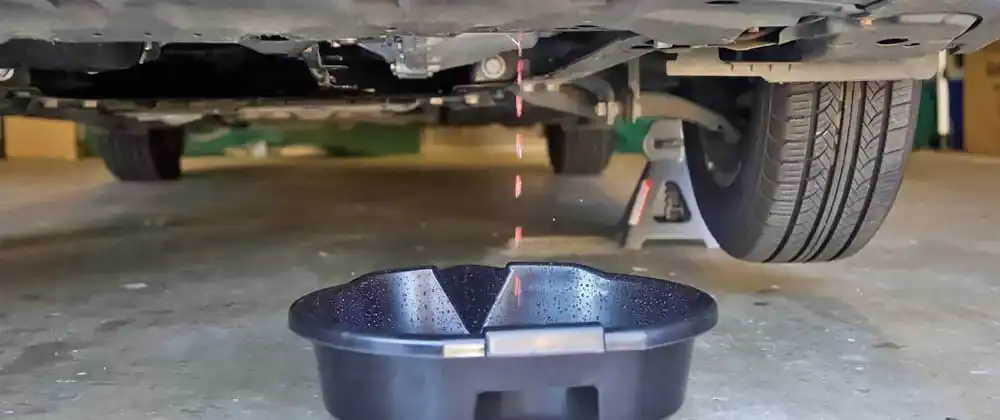
1. Make sure that the engine is running cool
Do not begin the work for a flush of the Cooling system in a condition where the engine is hot, or even hot. Coolant and antifreeze are extremely hot and will keep their heat for a long time after the engine has stopped running. When you lift the front wheels, it will be easier to access the point of drainage for radiators (under the vehicle).
2. Find the Radiator
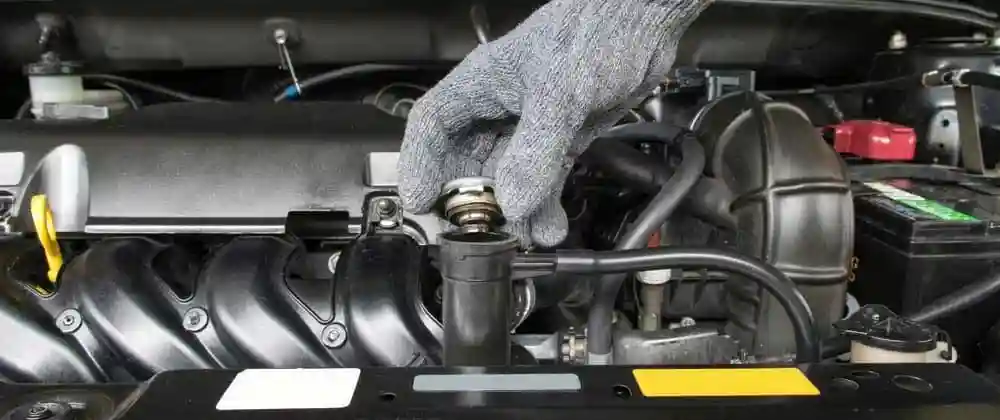
- Take the top off your car and check for a finned, flat metal piece close to the front. It is part of the Radiator.
- Find an oval cap, usually metal, which leads toward the Radiator. It could read ” Coolant for radiators ” or something similar to it.
- The cap’s location is crucial as you’ll add fluids to it in the future.
- Take the Radiator out
- Under the vehicle, crawl under it and search for a valve or large-diameter rubber hose connected to the Radiator, with an adjustable clamp that holds it in its place.
- Place your drain pan directly underneath the valve or clamp for the hose, and then release the valve or the clamp.
- Pro Tips: If it’s an arrangement of hoses, take the hose off its fitting. Likely, antifreeze (typically either pink or greenish yellowish) will quickly pour out.
- Allow the Radiator to drain for at least 10 minutes, or until a steady drip of antifreeze is left.
3. Radiator Flush
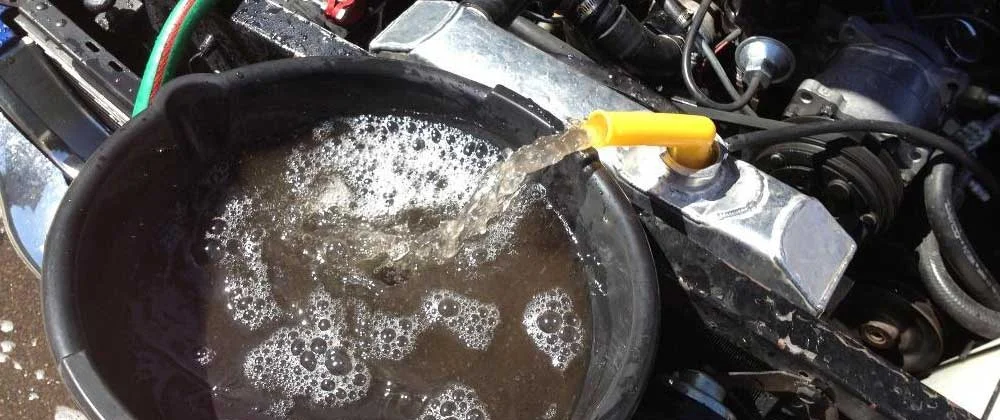
- Replace the hose and tighten the clamp that holds it in place. Close the radiator drain valve if your vehicle includes one.
- Please take off the cap on the Radiator and pour the distilled water over it until it’s full.
- Refill the cap, restart the car, and allow it to run for about 10 to 15 minutes.
- It is the process of introducing distillate liquid into your engine and flushing out any loose debris or corrosion as well as the last remnants of antifreeze.
- Switch off your vehicle and turn off the valve, or let loose the hose, then drain all the distilled water and dirt from the Radiator to your drain pan.
- Secure the clamp and close the valve. Then slide the entire drain pan away from the way.
- Pro Tip: Ensure that pets and children can’t come in contact with the antifreeze. It’s sweet, however, it’s highly toxic. You’ll have to take the antifreeze you have used to a toxic waste disposal facility such as an auto garage or an automotive parts shop which will take it for disposal in a safe manner. Transfer the antifreeze to the plastic containers that the new antifreeze arrived in.
4. Refresh Coolant
- Consult your owner’s manual to determine the amount of coolant (antifreeze) your Radiator requires.
- The cap on the Radiator that you found earlier. Put your funnel inside the outlet and pour a 50/50 mix with concentrated antifreeze and distilled water into the Radiator.
- You can also make use of premixed coolant for engines without diluting. However, this type is more expensive than antifreeze concentrate.
- Review the overflow tank and add more coolant until the tank’s level is above the line for service. The tank for overflow is made of plastic and is connected to the Radiator by the smallest flexible hose.
- Start the car and drive it for a few minutes before checking for leaks. If everything is in good order, it shouldn’t be necessary to repeat the procedure for 100,000 miles.
Top Off Coolant
- Please turn off the engine, add a bit of additional antifreeze, and then water until you see it appear at the bottom of your overflow tank.
- Cap the overflowing tank and fill it with more antifreeze and distilled water. Make sure to stop just a few inches below the line of service.
- Make sure that there are sufficient coolant levels once you restore with fresh coolant.
- Then you’re finished!
How often should I Clean to cool the System and the Radiator?
Automobile manufacturers and mechanics all give conflicting recommendations regarding the frequency of flushing an air conditioning system. The ideal frequency will be determined by various elements, starting with the age and condition of your car to the kind of driving you perform frequently and the type of antifreeze and coolant in the reservoir.
If you are unsure of the best time to flush your vehicle’s cooling system, check your manual for your car or follow the instructions given by the antifreeze or coolant manufacturer. As the scaling or corrosion starts building in the Radiator, it clogs the water pump, tiny passages of the Radiator, heater core, and engine’s water jackets.
If the cooling unit runs with the latest Prestone antifreeze and coolant, you’re covered up to 10 years, or 100,000 miles.
What Can I Tell the time my cooling System needs to be cleaned?
The most effective method of working out when it is time to cleanse the cooling unit is to examine the state of the antifreeze/coolant inside the reservoir. Inspect the reservoir by opening it and examining the color and consistency of the liquid. If the fluid is cloudy, murky, or thick, it may need to be replaced.
You may be able to spot the signs and symptoms of low-quality antifreeze or coolant before you’ve thought about testing the condition. The most common warning signs that suggest a problem with the coolant or antifreeze
- The low coolant/antifreeze light will be illuminated on the dash
- Cool air flowing from the vents in an extremely hot setting
- The engine temperature gauge slowly increases until it is in the red zone.
- The service Engine (or Check) Engine warning light
If you notice all of the above signs or signs and bring your vehicle to the garage earlier rather than later to avoid a more extensive repair or car breakdown.
What are the benefits of flushing My Car’s Cooling System?
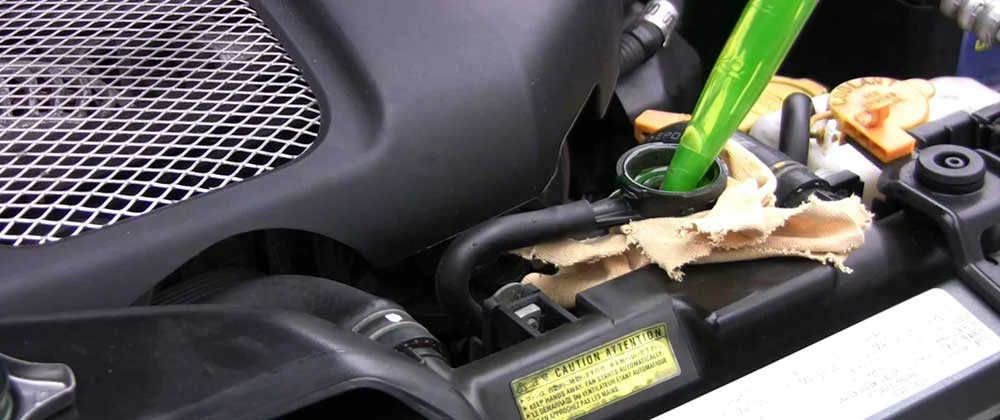
Alongside the peace of mind that comes with it, these are a few advantages of flushing your car’s radiator or cooling system:
- Cleans damaging deposits and scales: Sludge and particles are prevalent in radiators and hoses, and they can cause more severe engine issues. A flush is a way to flush the particles out to ensure optimal performance.
- Lubrication: The replacement of antifreeze or coolant with a new batch of coolant will grease moving parts of your cooling unit, including the pump for water. It will prolong the lifespan of essential elements in the System.
- Better corrosion and temperature protection for your engine: Choose a superior quality coolant or antifreeze after an engine flush. You’ll be able to better shield the vehicle from high temperatures and corrosion, thereby enhancing your vehicle’s performance and prolonging its life.
- Understanding exactly what’s inside the engine: When you purchase a used vehicle, it isn’t easy to figure out which type of coolant or antifreeze is present in the System, what its quality is, and how often it’s been mixed in with other fluids. Removing old fluids for new after a flush will mean you know precisely what’s at the helm of protecting your engine.
Conclusion
It’s not uncommon for people to neglect their vehicles’ cooling systems. However, it must be flushed regularly to keep your vehicle running smoothly. Flushes are recommended yearly, depending on the vehicle’s age and usage.

My Name is Christopher Angels, and I am a postgraduate in mechanical engineering. Cars have always excited me as a child, and soon I decided to dive into the world of cars by pursuing mechanical engineering. I also worked as a Mechanic for over 3 years to understand Cars’ anatomy and how each part contributes to its working.
My Name is Christopher Angels, and I am a postgraduate in mechanical engineering. Cars have always excited me as a child, and soon I decided to dive into the world of cars by pursuing mechanical engineering. I also worked as a Mechanic for over 3 years to understand Cars' anatomy and how each part contributes to its working.

